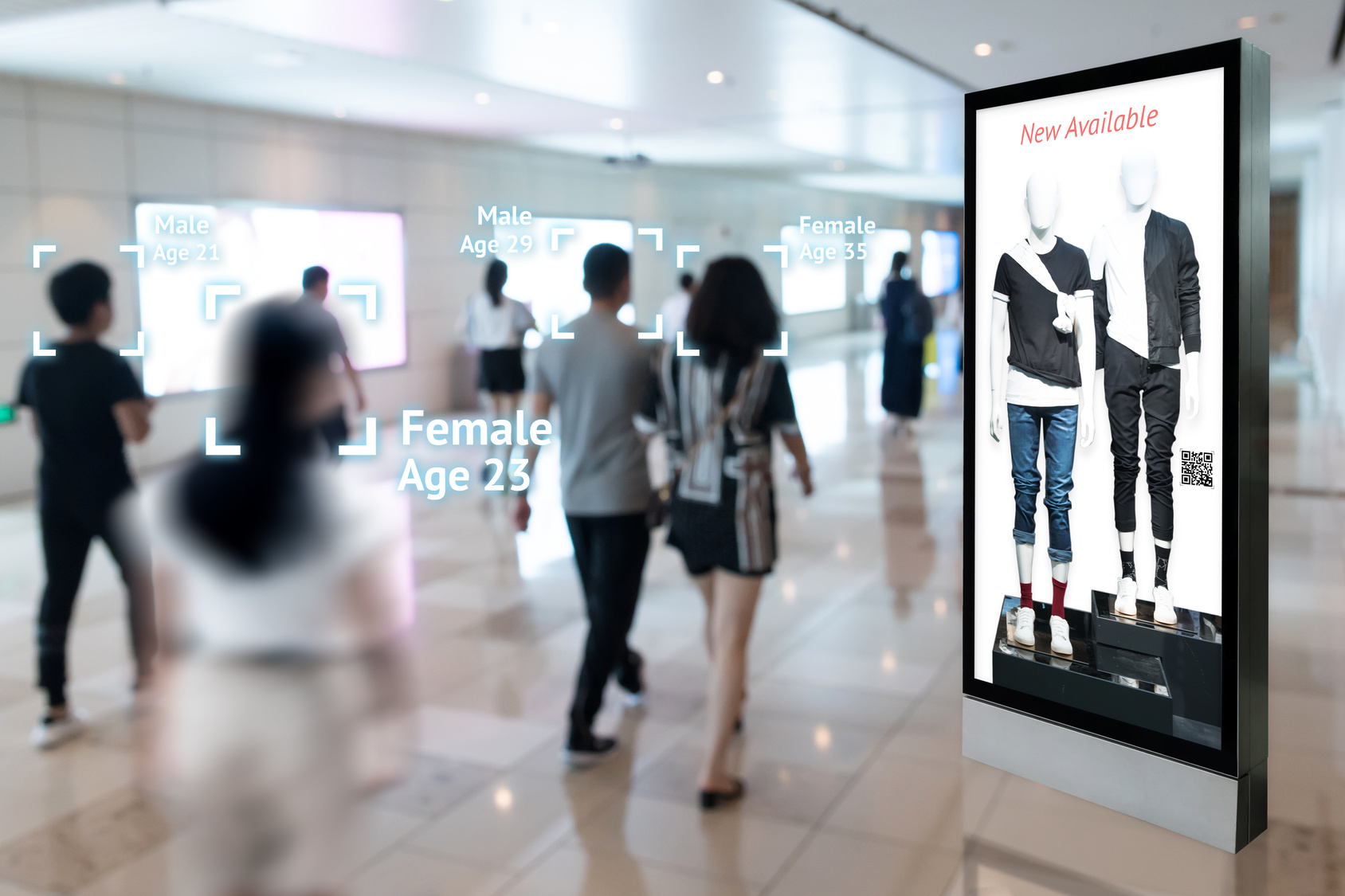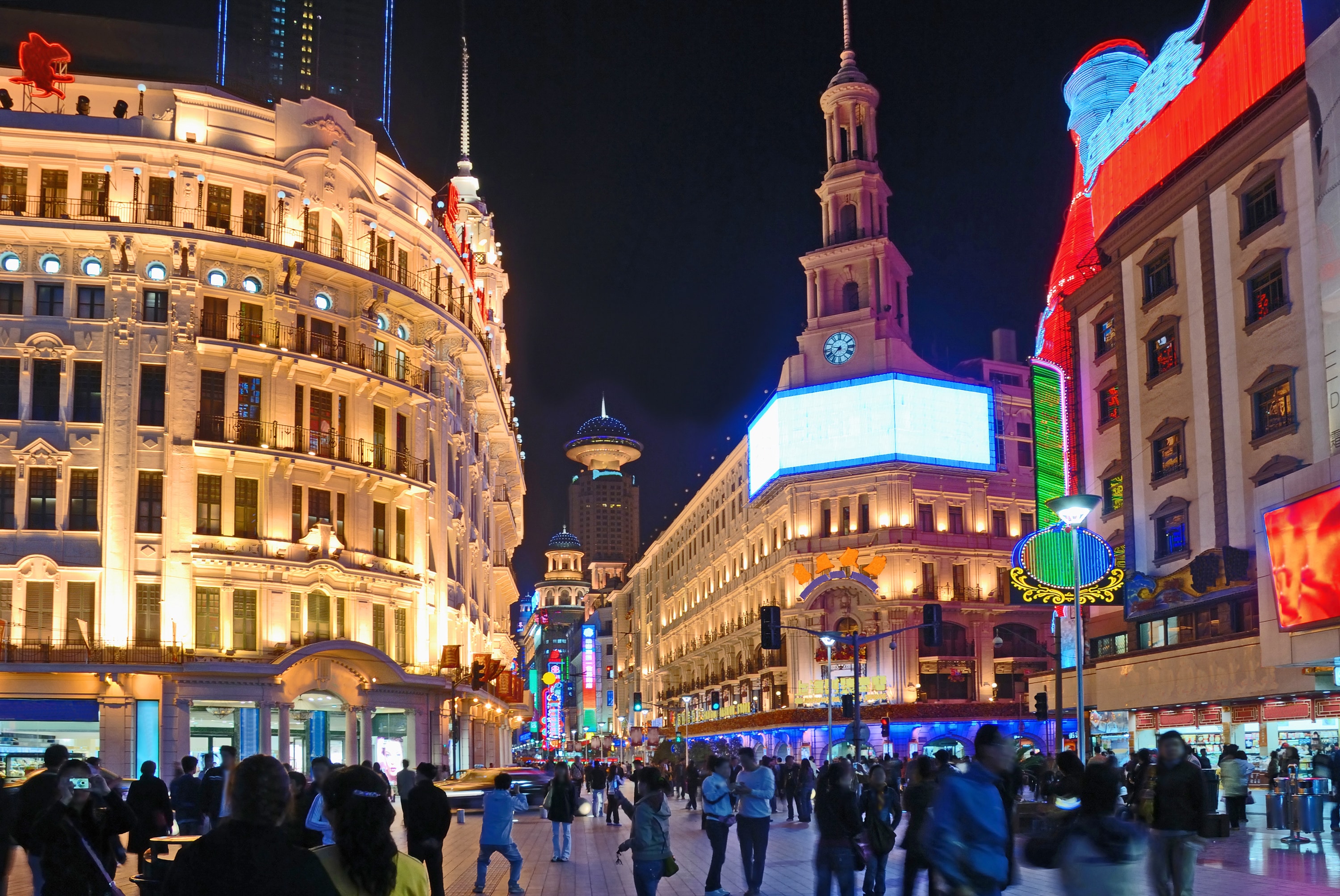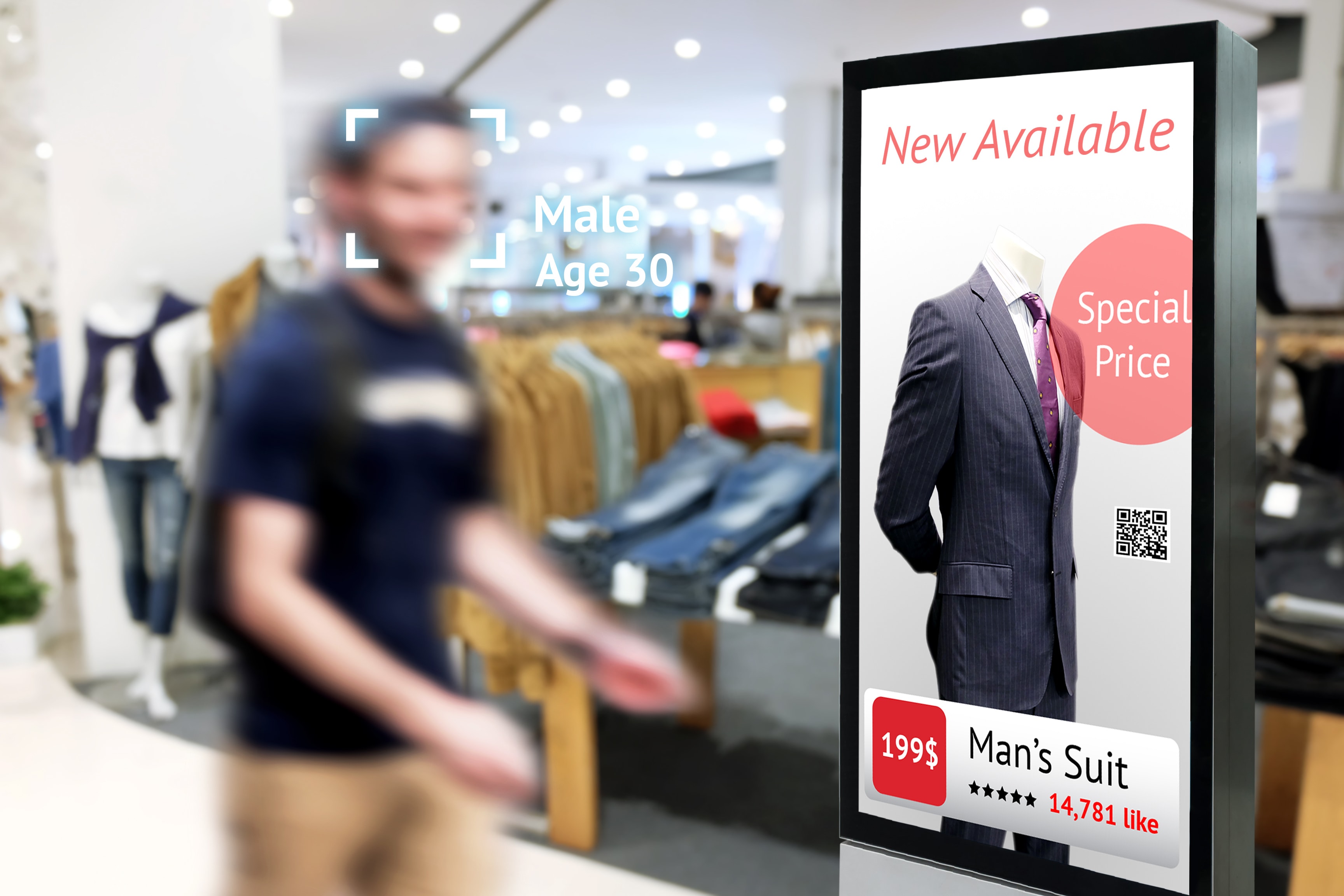Kinettix is the go-to global leader in providing IT field technicians and break/fix dispatches to U.S.-based enterprises and managed service providers, anywhere, anytime. To maintain our reputation, we go to great lengths to stay ahead of the latest retail IT trends. In March, we attended the Digital Signage Expo in Las Vegas and learned about recent innovations in digital signage.
One of our biggest takeaways from the event was that facial recognition software is transforming the retail space—and quickly. Let’s take a closer look at this technology to understand the future of digital signage.
What Is Facial Recognition?
Facial recognition has grown in popularity over recent years, particularly in the private sector. Innovations like SAFR™ from RealNetworks and Apple’s Face ID® have put the technology into the hands of consumers worldwide. At its core, facial recognition is a biometric technology that compares an individual’s facial features to an available database for identification and authorization. It includes 2D, 3D, and facial analytics.
Facial recognition is primarily used for security, but it has many other uses as well. Indian police, for example, recently used facial recognition software to identify 3,000 missing children in just four days. A new mobile app vibrates and beeps when someone smiles at the user, helping blind and visually impaired individuals better understand social cues. Retailers are also using facial recognition in their day-to-day operations.
Facial Recognition & Retail IT
Retailers can use facial recognition to scan the faces of people nearing their digital signage. The technology then gathers demographic information—such as age and gender—and displays ads that those shoppers are most likely to respond to. It can also create a log of what kinds of shoppers are in the store at what times and determine what products customers respond to most.
Both advertisers and retailers benefit from this technology. Advertisements, for instance, more easily reach their target audience, increasing their effectiveness.
The retail industry can use this data to streamline the buyer’s journey and improve their customer’s experience. By understanding shoppers’ behaviors, preferences, and even moods, retailers can reorganize inventory or modify the layout to maximize profit. They can also drive traffic into the store. The more information a retailer has about their audience at any given time, the more they can tailor their store to meet their customer’s wants and needs.
Privacy in a Brick & Mortar
With any technological innovation, privacy is a common concern. Will patrons be turned off by the idea of facial recognition software? Will they avoid your store if they know you use it? More than likely, no.
Our society is becoming increasingly comfortable with cameras in public spaces. Most buildings are now equipped with security cameras, and today's 2.71 billion smartphone users can snap videos at a moment’s notice. People in 2019 are more used to being on camera than people 20 or 30 years ago. However, you may still want to alert shoppers of the biometric technology. Transparency builds trust, which, in turn, promotes customer loyalty.
People are also more likely to approve of new technology if it keeps them safe. Adding facial recognition to digital signage in physical stores can deter retail crimes, like theft. This technology can recognize when a registered shoplifter enters a store and alert store personnel, who can then greet the person by name. In most cases, this simple greeting is enough to get the shoplifter to leave peacefully.
Implementation in a Brick & Mortar
Many brick-and-mortar stores already have digital signage, whether it’s used to promote products, advertise events or support wayfinding. Facial recognition is relatively easy to deploy and implement in these displays because it doesn’t require any action by the end user. Kinettix has established partnerships that can help you navigate the challenges of implementing this technology on a global scale.
Facial recognition is changing the way we shop—and retailers who want to compete need to stay ahead of the curve. Contact us for a consultation and to learn more about how we can ensure that your retail IT deployment is a success.






